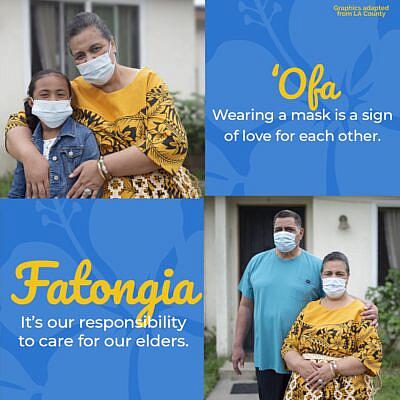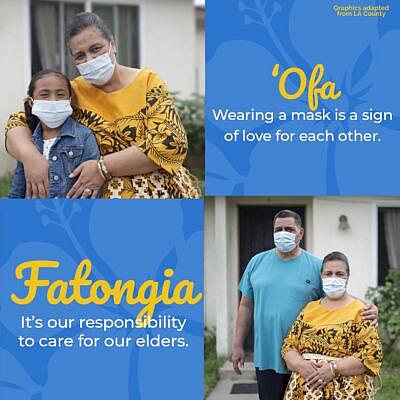Pacific Islanders Have The Highest COVID-19 Death Rate In Hawaii
This article is part of a larger project by Anita Hofschneider, produced with support from the 2020 National Fellowship and a grant from the Dennis A. Hunt Fund for Health Journalism.
Her other stories include:
Community Leaders: State Is Failing Pacific Islanders In The Pandemic
Hawaii's Pandemic: Hardest Hit Communities Part 1: Hawaii Wanted To Save Insurance Money. People Died
Hawaii's Pandemic: Hardest Hit Communities Part 2: Health Officials Knew COVID-19 Would Hit Pacific Islanders Hard. The State Still Fell Short
Hawaii Researchers: State Must Support Pacific Islanders In The Pandemic
Women Were Already Struggling At Work. The Pandemic Is Making It Worse
Here’s What Honolulu Is Doing To Test Hard-Hit Communities For COVID-19
Kalihi Has The Worst COVID-19 Outbreak In Hawaii. Here’s How The Community Is Responding
Hawaii COVID-19 Data For Race And Ethnicity Is Missing
Hawaii Pacific Islanders Are Twice As Likely To Be Hospitalized For COVID-19
Hawaii's Pandemic: Hardest Hit Communities Part 3: Pacific Islanders Can’t Return Home During COVID-19 — Even To Bury Their Loved Ones
Hawaii's Pandemic: Hardest Hit Communities Part 4: The Pandemic Is Hitting Hawaii’s Filipino Community Hard

The City & County of Honolulu is sharing coronavirus messages in Tongan created by Los Angeles County.
Non-Hawaiian Pacific Islanders make up 16% of Hawaii’s coronavirus deaths even though they are only 4% of the population, according to newly released data from the Hawaii Department of Health.
There have been 49 confirmed coronavirus-related deaths in Hawaii. Eight were Pacific Islanders — Indigenous peoples of Polynesia, Micronesia and Melanesia, excluding Native Hawaiians.
Hawaii’s Filipino community is also experiencing disproportionately high coronavirus deaths. Twelve of the 49 people who died were Filipino, or 24% of all deaths thus far. The community makes up 16% of the state population.
Sixteen percent of Hawaii coronavirus deaths have occurred in the Japanese community, which makes up 15% of the state population, according to the state’s official counts. Every other racial or ethnic community in Hawaii has reported fewer than five coronavirus-related deaths thus far.
//
It’s important to note that because there have been relatively few COVID-19 deaths in Hawaii, a few deaths can drastically affect the percentages.
Still, the data is significant. It’s the first time that Hawaii has released racial and ethnic breakdowns of COVID-19 deaths since the start of the pandemic. The state hasn’t released the same breakdown for hospitalizations.
Josie Howard, who helps lead a new COVID-19 task force made up of Native Hawaiians and other Pacific Islander community leaders, said she sees the Facebook posts of people who are grieving their loved ones lost to COVID-19.
“I feel like we have to take charge. Somebody is not going to do it for us. We have to do it,” she said.
The disparity affecting Pacific Islanders echoes the disproportionate number of cases in that community. They make up 30% of infections, compared with just 4% of the population.
The City & County of Honolulu is sharing coronavirus messages in Tongan created by Los Angeles County.
Howard is one of many Pacific Islander community leaders and service workers in Hawaii who have been scrambling to support their communities with limited resources. Pacific Islanders in Hawaii often work in the service industry or hold other frontline jobs, and are more likely than many other communities to live in overcrowded housing and lack health insurance.
She hopes her community realizes the seriousness of the pandemic and the importance of following social distancing rules. She also hopes for policy change, such as the reinstatement of Medicaid eligibility for Pacific migrants.
“I would be sad if we do not look at the impact of COVID and relate to all the fundamental problems and systematic problems that have brought us this far,” she said, adding: “In this time of crisis and the time where our community is facing the most deadly pandemic, we are very grateful to those people who have been helping us and reaching out to us.”
Pacific Islanders in Hawaii have by far the worst coronavirus infection rate but they aren’t the only community experiencing a disparity. People who are classified as “Other Asians” — excluding Japanese, Chinese and Filipinos — make up 8% of Hawaii coronavirus cases, while just 4% of the population. That category also includes people who are classified as Asian in general.
A previous version of this story incorrectly said the “Other Asians” category excludes Koreans.
The Filipino community makes up 17% of cases compared with 16% of the population. Earlier in the pandemic, they had a more pronounced disparity.
No other racial and ethnic groups are currently experiencing disproportionately high coronavirus infection or death rates in Hawaii.
But the state is behind on updating its race data for COVID-19 infections. More than half of it is missing — the state has posted race data for only 3,214 cases and lacks race data for another 3,400 cases.
Janice Okubo, a spokeswoman for the Department of Health, said disease investigators and contact tracers who normally collect race data haven’t been able to keep the information updated as quickly due to the recent uptick in cases.
“Their priority is ensuring the timely identification of cases and close contacts to curb the spread of COVID-19, and with the high number of cases, verifying information such as race is secondary to this and therefore can be delayed in its completion,” she said in an email.
Hawaii still hasn’t released coronavirus data for the Hispanic or Latino community. In general, Hawaii has lagged behind other states in releasing pandemic-related data.
But Hawaii is unusual in providing more detailed breakdowns of Asian and Pacific Islander communities. Other states generally include Native Hawaiians in a broader Pacific Islander category or lump Pasifika peoples with Asians or Native Americans. That can mask the coronavirus disparities affecting Pacific Islanders nationwide.
This story was produced with support from the USC Annenberg Center for Health Journalism National Fellowship and its Dennis A. Hunt Fund for Health Journalism.
[This story was originally published by Honolulu Civil Beat.]

